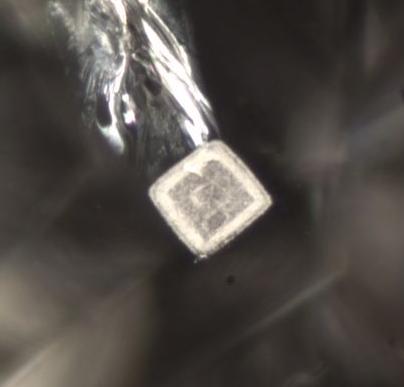A cloud in a diamond refers to a type of inclusion consisting of tiny, hazy clusters of fine, needle-like inclusions that appear as a clouded or milky area within the diamond. These inclusions are typically very small and difficult to see without magnification. A cloud can sometimes be composed of tiny crystals of carbon or other microscopic inclusions within the diamond.
Characteristics of Clouds in Diamonds
Appearance
A cloud in a diamond appears as a cloudy, hazy, or milky area within the stone. It is not a single inclusion but rather a group of inclusions that blend together, giving the effect of a cloud.
Clouds are typically microscopic in size, so they are often not visible to the naked eye, especially if they are near the centre of the diamond. However, they can affect the overall clarity and brilliance of the diamond.
Location of Clouds
Clouds can appear anywhere in the diamond, but they are typically found in the interior (internal inclusions) rather than on the surface.
If a cloud is near the surface of the diamond, it may be visible to the naked eye, affecting the diamond’s overall appearance.
Impact on Clarity
The presence of a cloud affects the diamond’s clarity grade, but whether it has a significant impact on its appearance depends on its size, location, and visibility.
If a cloud is large or located near the centre of the diamond, it may reduce the diamond’s brilliance and sparkle by obstructing light and causing the diamond to look cloudy or less transparent.
Small clouds that are not visible without magnification typically have little to no effect on the diamond’s overall appearance, and they may not significantly lower the clarity grade.
Clouds and Light Performance
Clouds can sometimes affect how light travels through the diamond, leading to a slight reduction in brilliance. However, in many cases, their effect on light performance is minimal, especially if the cloud is small or located in an inconspicuous part of the diamond.
Larger clouds may scatter light, causing the diamond to lose some of its fire (the dispersion of light into rainbow colours) and brilliance (the overall brightness or sparkle).
Grading Cloud Inclusions
Cloud inclusions are often considered when determining a diamond’s clarity grade. They typically fall under the “SI” (Slightly Included) or “I” (Included) categories depending on their size and visibility.
Diamonds with small, inconspicuous clouds may still receive high clarity grades like VS (Very Slightly Included) or VVS (Very, Very Slightly Included) if the cloud does not significantly affect the overall appearance of the stone.
Cloud vs. Other Inclusions
Feathers: Unlike clouds, which are made of multiple tiny inclusions, feathers are single inclusions that resemble cracks or fractures in the diamond. Feathers may be more easily seen or cause damage if they are near the surface.
Pinpoints: A pinpoint is a single, tiny inclusion, often a carbon crystal, and is generally much smaller than the inclusions found in a cloud.
Clouds and Diamond Value
The presence of a cloud can lower a diamond’s clarity grade, especially if it affects the stone’s appearance and brilliance. However, if the cloud is small and not visible to the naked eye, the impact on value may be minimal.
Diamonds with higher clarity grades, such as IF (Internally Flawless) or VVS, are typically priced higher than diamonds with visible inclusions like clouds.
Is a Cloud Bad for a Diamond?
A cloud doesn’t necessarily mean the diamond is “bad.” Many diamonds have small clouds that don’t affect their visual appeal. The key is whether the cloud is visible to the naked eye and if it reduces the diamond’s overall sparkle and brilliance.
High-quality diamonds with small or well-positioned clouds can still be stunning and maintain their value. The presence of a cloud is just one factor in a diamond’s overall quality assessment.

